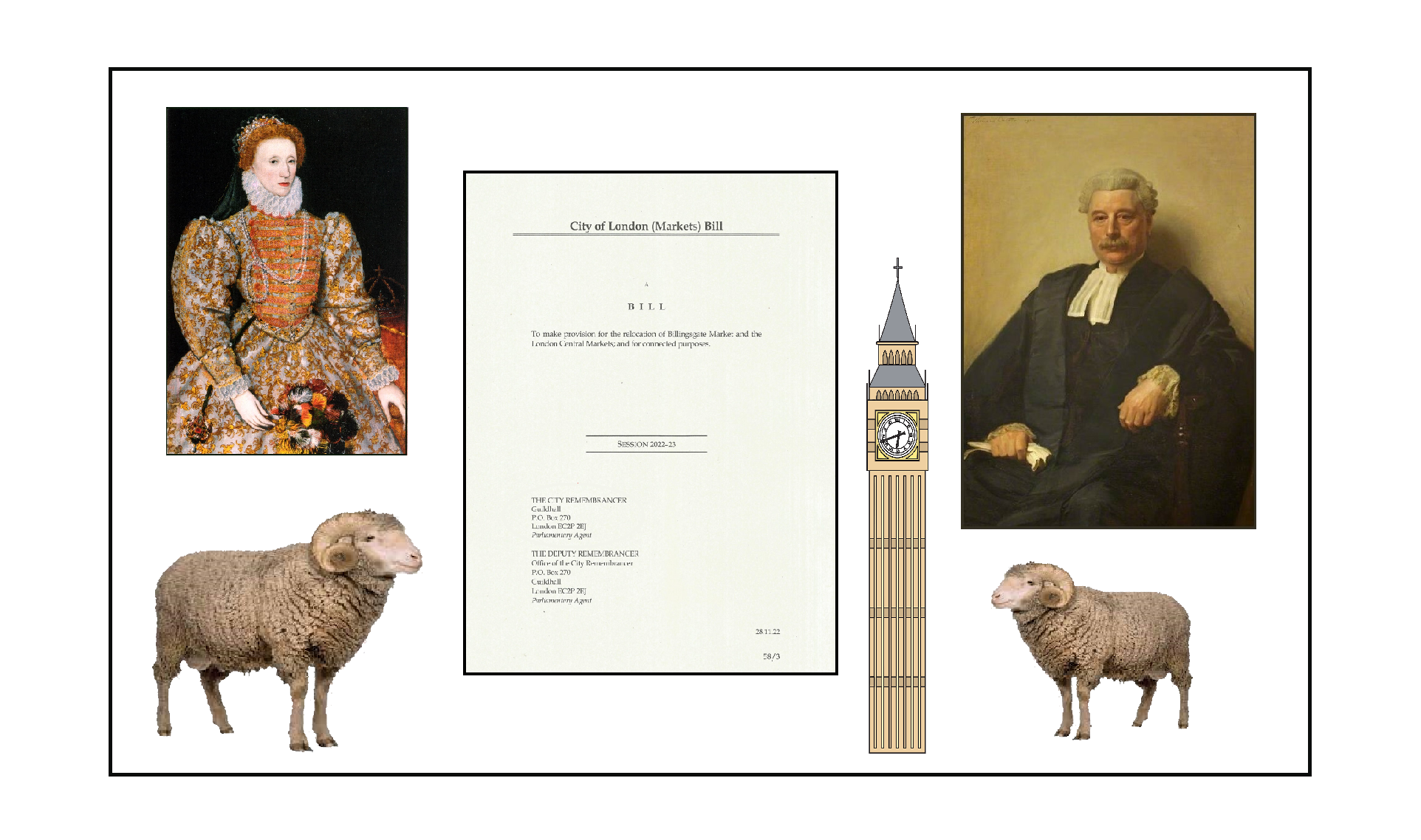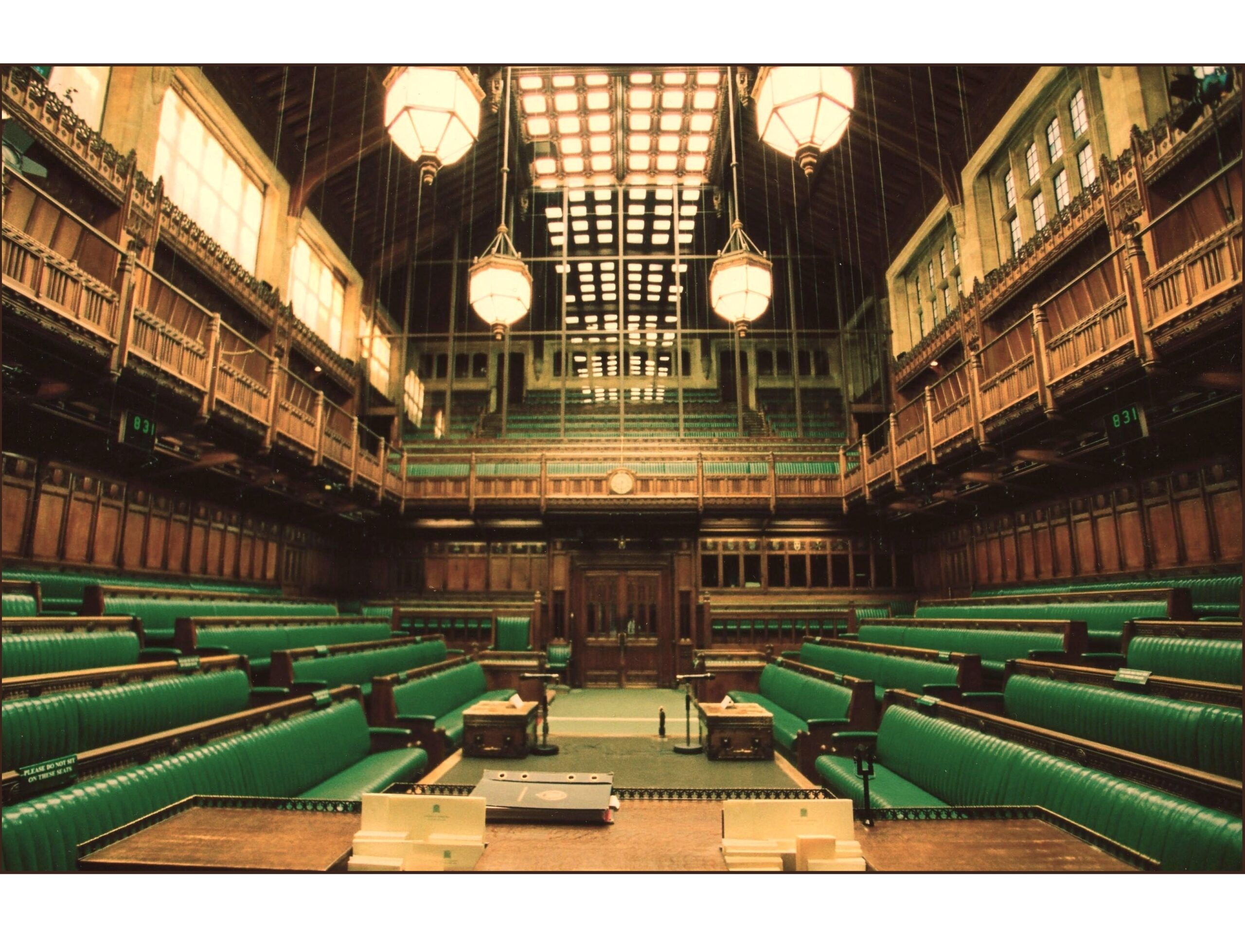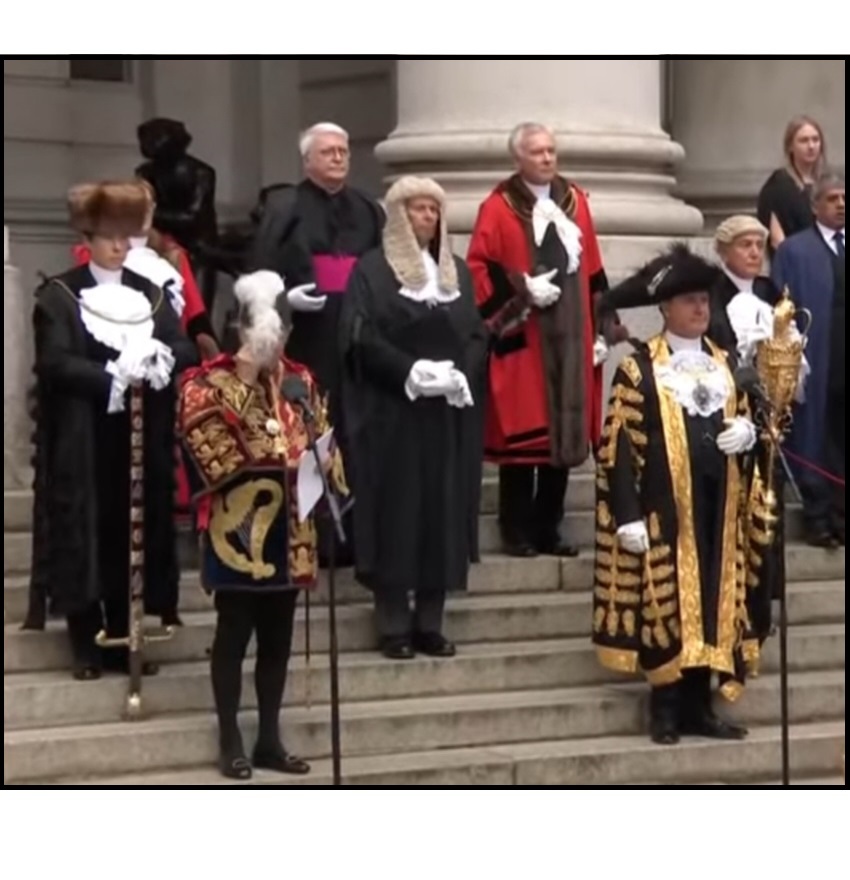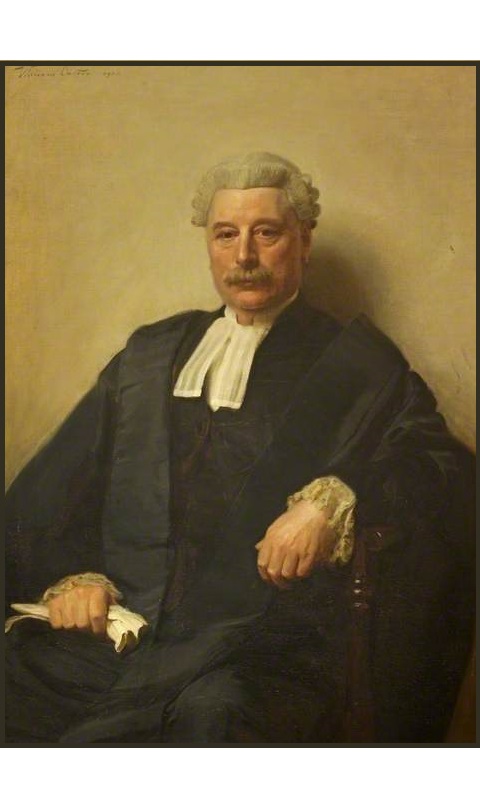
The City Remembrancer, a role first created 450 years ago, is just one of many curious officials employed by the City of London Corporation. Strangely, he1 spends a lot of time not in the City of London, but in the City of Westminster – specifically Parliament. Why the Remembrancer attends the House of Commons, exactly what his rights and duties are, and why the role has at times been a focus for anti-City sentiment are intriguing questions. I walk the tightrope of political impartiality as I attempt to answer them.
Why the Daft Name? A brief history of the position
In 1571 the Corporation was in need of an official to bring its journals and repertories up-to-date; the title was probably used because the position maintained the memory of the City. The first incumbent was Thomas Norton, a barrister who had the distinction of marrying both the daughter and niece of Archbishop Cranmer. Norton co-wrote a play, Gorbuduc, the earliest tragedy written in English and performed for Elizabeth I in 1561; he was, furthermore, an MP for the City of London. He became an extreme Calvinist in later life and went on to torture Catholics at the Tower of London with such enthusiasm it worried even his Protestant friends. Intrigues led to his downfall, and he was himself imprisoned in the Tower. He died soon after his release in 1584.
Unsurprisingly, the Corporation decided to give the role a rest. Eighteen months later the Queen suggested that wasn’t a good idea and a rapid U-turn led to the appointment of Dr. Giles Fletcher – diplomat, author, lawyer, MP and uncle of playwright John Fletcher. The position evolved into one dealing with important Mayoral correspondence, much of which was with Parliament. Yet the Corporation still sometimes dithered on the need for the role. Thomas Skinner was appointed in 1646 after a three-year vacancy, with a remit “to negotiate the affaires of this Citty havinge addresses to the honorable houses of parliament and elsewhere.” Charles I was under house arrest, Parliament’s star was in the ascendant, and the Corporation probably decided it needed someone close to the centre of power.
In 1760 the role was made available for purchase. The highest bidder was Brass Crosby, a radical and future Lord Mayor who in that role barred Navy press gangs from the City and later protected printers producing reports of House of Commons debates, then illegal, for which effort he was briefly imprisoned in the Tower. He paid £3,600 (£575,000 today) for the job but soon resigned and demanded a refund because he was having to share the work, and hence fees, with others. Peter Roberts then bid £2,000, but he too soon demanded a refund. The role reverted to being by appointment with fees and a daily allowance when parliament was sitting. Roberts got the gig and remained in post until his death thirty years later.
In 1821 the Remembrancer became a salaried position in lieu of previous fees, and the new job description closely resembled the role today: Attendance at, and petitions to, Parliament as the Corporation’s legal representative there; addresses to the Royal Family and organising certain other ceremonies; and attending the Court of Aldermen. Sixty years later the incumbent Charles Robarts was accused of cooking the books. This led to a legal case that found him innocent, but Robarts wasn’t re-elected to the role. This surprised him as no-one had previously mentioned any need to be re-elected. He sued the Corporation, believing it was a fiction created to get rid of him, but the courts found otherwise. Robarts and his replacement, Gabriel Goldney, were in post during the most perilous period in the Corporation’s existence, as you’ll read later, when use of slush funds was de rigueur.
The Role Today: Protocol and Parliament
The Remembrancer’s role today continues to consist of two elements: Ceremonial, as the Corporation’s chief of protocol, and Parliamentary. I’ll focus on the latter.
The Corporation as an entity is considered to have existed since time immemorial, meaning it exists today simply because it has existed since before records began and no one has yet managed to abolish it. It has no constitution. Instead, there exists only a raft of obscure Corporation-specific legislation dating back through the centuries, and this has three main consequences: (1) New legislation unrelated to the Corporation may have unintended consequences by impacting Acts of Parliament governing the City. For this reason, the Remembrancer will assess proposed legislation. (2) Changes to the Corporation’s modus operandi may require the introduction of a private bill in Parliament. The Remembrancer will draft the bill and submit it to the Commons. (3) Parliament has a history of introducing legislation aimed at restricting or abolishing Corporation powers. The Remembrancer is always on the lookout for such legislation, and will usually lobby against it.

The Remembrancer may also coordinate the submission of evidence to parliamentary committees where the Corporation has relevant input.
He and his deputy are two of around twenty parliamentary agents – special lawyers allowed to undertake parliamentary work including the promotion of, and opposition to, private bills. As a parliamentary agent, he can sit in the under-gallery, the area underneath the public gallery, close to the Serjeant at Arms.
← The view from the Speaker’s chair shows, at the far end, the public gallery behind a Perspex screen, above the ground floor under-gallery. The benches where the City Remembrancer can sit are partly obscured by wooden railings, either side of the entrance.
As he is not an MP, the Remembrancer cannot speak in debates and cannot vote. He is simply an observer, making him pretty much like anyone sitting above him in the public gallery, but with a more interesting view and a guaranteed seat. He has similar rights in the House of Lords.

A difficult question to answer is why he still needs these facilities when Hansard produces records of debates within 3 hours. I can think of two reasons: (1) To get the feel for a debate, judging the house’s mood on an issue or bill relevant to the Corporation. This is too subjective for Hansard to record. (2) It enables him to contact MPs or his employers at Guildhall in real-time – although he must leave the chamber to do so – if an urgent issue arises in the house.
The 45th and current City Remembrancer is Paul Double. He’s been in post since 2003 and seems adept at avoiding publicity, a vital trait for a good lobbyist.
← Paul Double, centre, at the proclamation of the accession of King Charles III on the steps of the Royal Exchange in the City, 2022. He’s surrounded by equally strangely dressed officials. To the left is the Sword-bearer, bottom left the Clarenceux King of Arms (from the College of Arms); bottom right the Lord Mayor.
Case Study in Historical Oddities: The City of London (Markets) Bill
The Corporation has for some time wanted to move two of its wholesale markets, Billingsgate (fish), and the London Central Markets, aka Smithfield (meat), to a site further east in Dagenham. Smithfield has been on its present site at the edge of the Square Mile since the 1880s; in the 1980s Billingsgate moved from its historic location close to the Tower of London to a site in Docklands now surrounded by high-rise offices. As the relocation is a niche legislative subject, requiring the amendment or repeal of several existing laws applying only to the Corporation, and Letters Patent granted by Charles I in 1638, Paul Double submitted a private bill, the City of London (Markets) Bill, to the Commons in November 2022.
Enter Havering Council, a local authority and successor to the ancient Liberty of Havering-atte-Bower. It inherited that Liberty’s Royal Charter of 1247 protecting Romford Market – a retail market – from rivals. The charter forbade the creation of any other market within the distance a drover could move sheep in a single day, which was judged to be 6.7 miles; Dagenham is less than 6.7 miles from Romford. Havering has no objection in principle to the relocation, but does have an obligation to protect the rights of Romford Market. Smithfield, despite its reputation for wholesale, does sell retail on a small scale, including an auction of unsold Christmas stock at knock-down prices on Christmas Eve. Havering noticed the bill doesn’t limit the relocated markets to wholesale.
Result: Using a petition system created by Edward I more than 700 years ago, Havering has objected in Parliament to a bill submitted by an official whose role is 450 years old, to protect a sheep drover-based provision of an 800-year-old Royal Charter against a Corporation existing since time immemorial wanting to change 400-year-old Letters Patent. As I write, the bill is approaching the Committee stage, when Havering can argue its case. Hansard clerks should use quill pens for this one.
Ironically, in 1854 Remembrancer Edward Tyrrell admitted to a Royal Commission that he had spent £2,750 (£250,000 today) in ‘private opposition’ – probably actions of dubious morality – to oppose a government bill designed to move Smithfield market out of the City. How times change.
Reform sabotaged: How the role came to be resented
In 1637 the Corporation was offered the chance to expand its territory across the metropolis by Charles I, but declined. Instead, it decided to cling on to its unique privileges, outdated customs and structures, and its single square mile – nowadays a ludicrously small size and population (around 10,000) for a local authority. It has since survived countless attempts to abolish it, while other London authorities have been consigned to history: Liberties2, civil parishes, vestries, the Metropolitan Board of Works (‘MBW’), Metropolitan Boroughs, Middlesex, the London County Council (‘LCC’) and the Greater London Council – all gone. How has it managed this feat? Well, it is rather rich, has powerful connections, and as a local authority it is efficient and well run. But perhaps most importantly, it has the Remembrancer.
T.B. Smith’s 1993 analysis of the Corporation’s ability to block reform in Victorian times shows how remarkable this ability is. Efforts to create a single authority for the metropolis gathered pace and with each threat the Corporation struck back with all the tactical nous and immorality of Machiavelli. At the heart of its campaign was the Remembrancer. His guiding principle was to “oppose every bill which would interfere with the rights and privileges enjoyed by the Corporation” and his lobbying helped defeat bills and reports on at least twelve occasions between 1835 and 1875. In 1864 the City Press claimed each session of Parliament saw a new gesture of hostility against the City. Three Royal Commissions investigated the Corporation, in 1837, 1854 and 1893, and were highly critical, but produced only slow and moderate reform. The Remembrancer must have felt under siege at times, and there were occasional failures: In 1863 he couldn’t stop a bill allowing the MBW to construct Queen Victoria Street straight through the Corporation’s territory. This must have been galling as the Corporation was trying to prove it could manage its own infrastructure projects – the vast Holborn Viaduct development, costing £2.5m (£250m today), was already under way.
The Remembrancer also introduced one of the Corporation’s most famous private bills of the era. This was the Epping Forest Bill, a huge PR triumph at a time the City most needed it. The bill placed management of 6,000 acres of open space and woodland in the hands of the Corporation to protect it for the public. It sailed through Parliament in 1878 despite opposition from, you guessed it, the MBW.
The greatest threat came with an 1884 Government-backed reform bill. This aimed to create a single metropolitan council based on a reformed Corporation. The unreformed Corporation was having none of it and formed a committee to coordinate opposition. This collected a petition of 20,000 signatures – many probably fake or bought – and circulated anti-reform pamphlets; paid people to create intimidating opposition at public meetings; financed groups to stall the bill and mislead Parliament, and established an ‘Anti-One-Municipality League.’ Its spending totalled £19,500 – around £1.9 million today. As a result, the bill ran out of time in the Parliamentary session, and was not reintroduced. Much of the campaign had been the responsibility of the Remembrancer, Gabriel Goldney, who later admitted to a Parliamentary Select Committee that he had paid a go-between to employ men to break up meetings. The committee concluded there had been foul play on both sides, but it was perhaps at this point that the Remembrancer cemented his reputation as a viper nourished in the bosom of Parliament. To the Corporation’s opponents it must have seemed that reform was blocked at every turn by this shadowy figure in the under-gallery.
→ Sir Gabriel Goldney (1843-1925), City Remembrancer 1882-1903. Occasionally dubious methods, always outstanding results.
Goldney had been aided by the scandals that plagued the Corporation’s sworn enemy, the MBW. And when a bill to create a London-wide authority was finally passed in 1888 with Goldney’s tacit consent, it slew not the Corporation but the corrupt and rotten MBW, and gave the new metropolitan authority, the LCC, little control over the Square Mile. The bill’s author, C.T. Ritchie, was playing a long game, believing the reforms would ultimately cause the Corporation to wither. How wrong he was.
After the distraction of two world wars, new problems arose for the Corporation. Firstly, its population had plummeted and changes to the voting system to boost the electorate included allowing companies in the City to nominate additional voters; this arrangement is looked on with deep suspicion by opponents. Secondly, the financial services sector – with all its scandals and alleged dubious practices – began to dominate the economy of the Square Mile and provide much of the Corporation’s income. Unsurprisingly, the Corporation has become the sector’s cheerleader. The two are now hated in almost equal measure, being inseparable in the minds of many, but this conveniently ignores how well the Corporation fulfils its local authority duties, and its governance of Epping Forest, Hampstead Heath and the Heathrow Animal Reception Centre. No other authority could afford these responsibilities without burdening the ratepayers.

Nevertheless, the Economist was not far wrong when it stated in 2001 that: “There are three ancient institutions … in modern Britain: the monarchy, the House of Lords, and the Corporation of … the City of London. But while the importance of the first two is much diminished, the Corporation, the least reformed of all, is more influential than it has been since its medieval heyday.” Many politicians and campaigners are against such influence and the Remembrancer is sometimes a focus for their ire in Parliament. In 2013 Green Party MP Caroline Lucas wrote to Speaker Bercow, asking him to consider removing the City Remembrancer from the floor of the House of Commons, and to end the Remembrancer’s special privilege of viewing legislation as it is being drafted. Strictly speaking, the Remembrancer has neither right but such myths are widely repeated in political blogs and elsewhere. Typical are these, on the From Tone website:
“The City of London is the only area of the UK over which parliament has no authority. Instead, it is the Corporation that imposes on Parliament, with the Remembrancer.”
This is an absurd statement. Parliament is sovereign and the City has no legal power over it. If Parliament genuinely had the will to abolish the Corporation, it could do so by passing a law to that effect. It would be complex legislation to be sure, but it could be done.
“The Remembrancer … has a special seat to the right of the Speaker in the House of Commons.”
As the space to the right of the speaker is where the government sits, this is an attempt to imply the Remembrancer has some special powers, which is untrue. The under-gallery, where he actually sits, is not to the right of Mr. Speaker, it’s as far away as you can get in the chamber, but this widely-held belief may come from a tradition that the MP for the City of London can sit on the Government front bench on formal occasions. This continued (as Erskine May, the Parliamentary rulebook on procedure, confirms) even after the 1948 merger of the Cities of London and Westminster constituencies, but only for the opening day of a parliamentary session.
From Tone is closer to the truth quoting Nicholas Shaxson, author of ‘Treasure Islands: Tax Havens and the Men who Stole the World’ and no friend of the City, who calls the Remembrancer “the world’s oldest institutional lobbyist”. Shaxson could have added “… and one of the world’s most successful”. The continued existence of the City of London Corporation against all logic is testimony to that. He has seen off generations of foes from the MBW and Victorian philosopher, economist and MP John Stuart Mill, who called the Corporation “that union of modern jobbing and antiquated foppery”, to postwar Labour PM Clement Attlee and present-day anti-Capitalist protestors. Whether this is a good or bad thing is not for me to say.
Notes:
Nearest Station: Westminster
Credits:
Selected Bibliography: